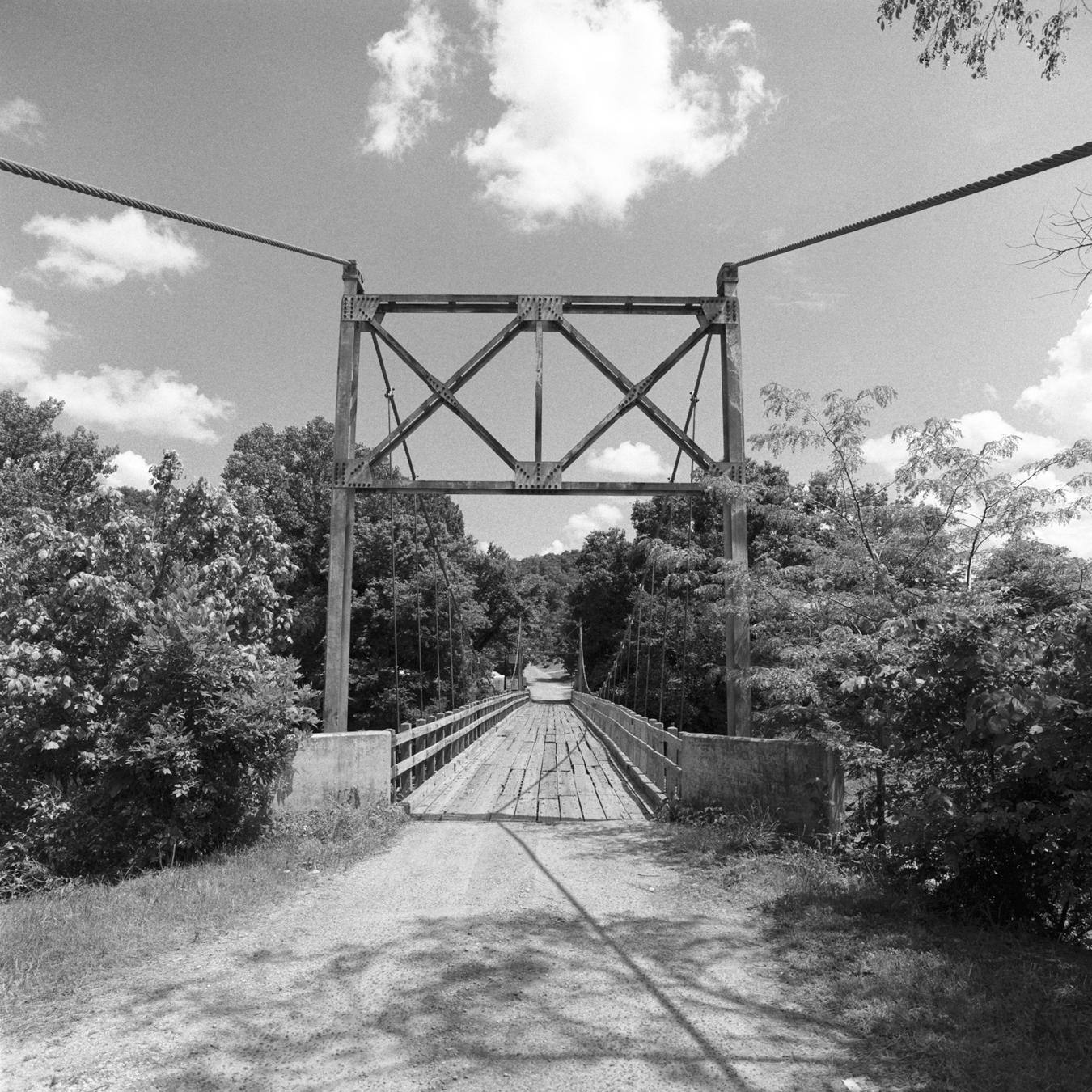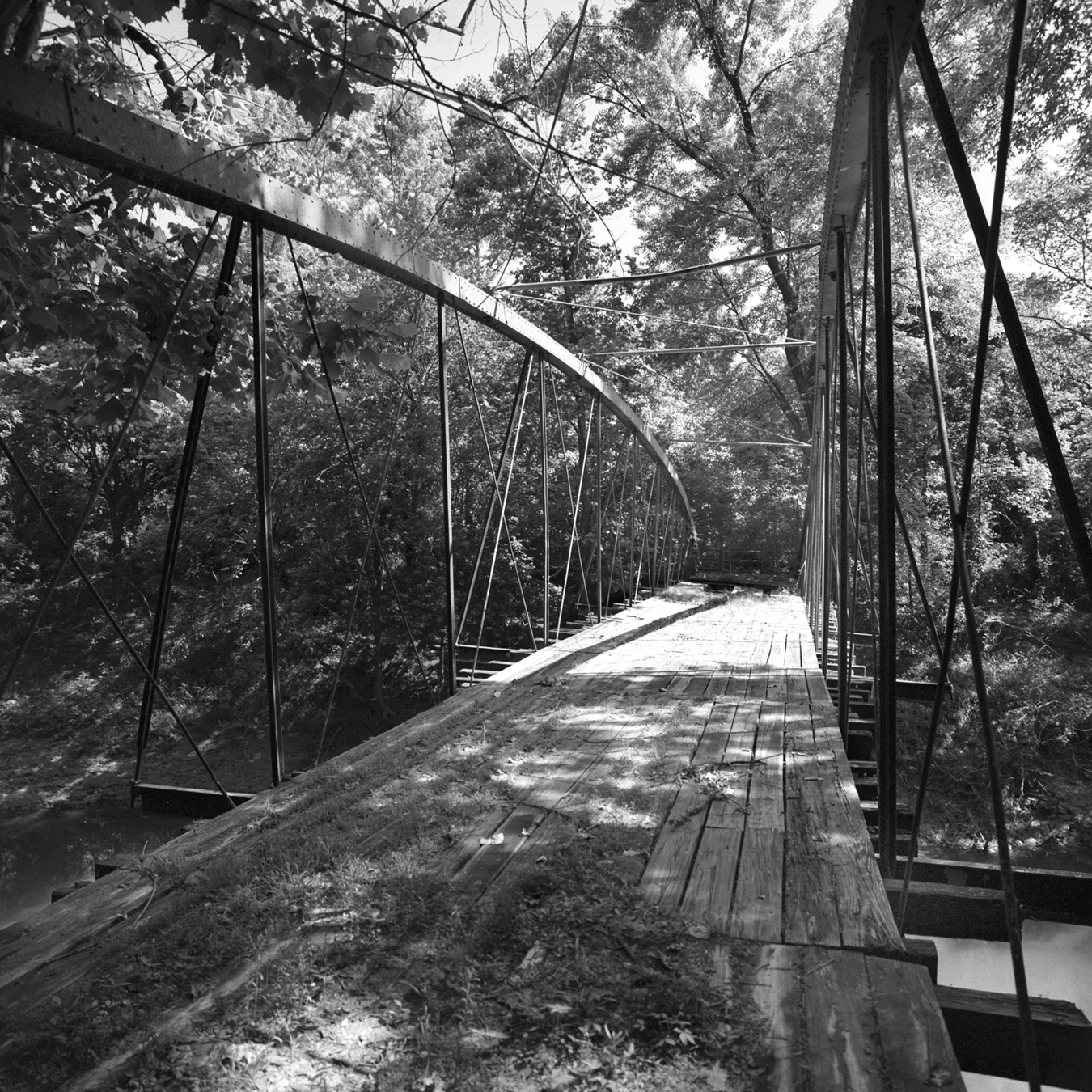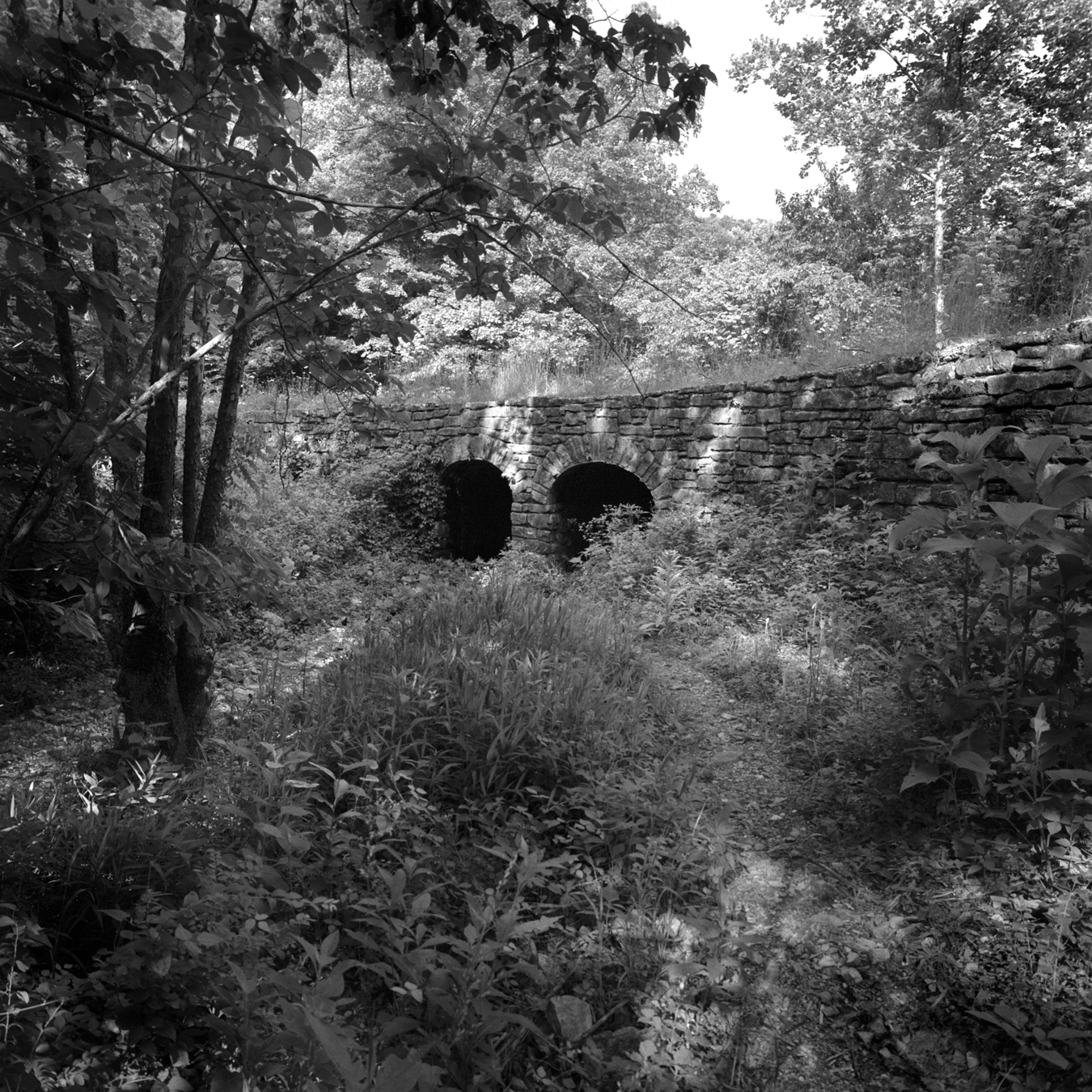“Arkansas’s historic bridges speak to us in different ways,” Tommy Sanders narrates at the beginning of the film. “To some, they sing. To some, they bang. To some, they whir. They stand as a testament to a time when practicality was a union of strength and beauty. To an artist, the bridges connect the present to the past and people to a community and a sense of place.
Originally broadcast in 2005, the Arkansas PBS original production “Historic Bridges of Arkansas” shines a light on historical architecture, which can sometimes showcase the character of communities. “Historic Bridges of Arkansas,” produced by Casey Sanders, will air Thursday, July 31, at 7 p.m. as part of our “From the Archives” series. You can also watch on demand at myarpbs.org/youtube.

Photo courtesy of Maxine Payne
Finding the Story
While taking a photography class at the Arkansas Museum of Fine Arts, Arkansas PBS outreach producer Casey Sanders visited Pinkey’s Photography in Little Rock. While there, she talked with the owner’s son, Larry Polk, who knew she worked at what was then AETN. He told Sanders about a bridge documentation project that Hendrix professor and photographer Maxine Payne had been entrusted with by Arkansas Department of Transportation Historic Resource Coordinator Robert Scroggin.
“That was all I needed to hear,” Sanders said. “I thought her story – and especially her photos – were incredible. When I reached out, Maxine was intrigued by the idea of a film and immediately pointed me to Robert Scoggin. He’d hired her – not for art, but for documentation. He needed someone to photograph the bridges to Historic American Engineering Record (HAER) standards for preservation.”
Scroggin said the project began in the summer of 2003, and he hired Payne, who also approached this as somewhat of a personal project.
“My grandfather, father and brother were bridge builders,” Payne said. “I thought it was a great way to sort of see what they experienced and some of the history behind building bridges and what they mean to communities.”
“That’s where it started – this idea that bridges are more than just structures. They connect communities. They carry history. And, in the hands of people like Maxine and Robert, they had heart.” – Casey Sanders
Memory and Literary Legacy
Among the many bridges Sanders and her team shot, the Wallace Bridge in Perry County resonated the most because of the story it told for Eloise Wallace. Payne interviewed Wallace and took her portrait. Eloise held an old family photo in her hands for the portrait.
“Eloise had this warm, no-nonsense way of telling stories – including one about her father-in-law, who was a farmer and doctor,” Sanders said. “He made house calls on horseback.
“Meeting Eloise was a reminder that these bridges aren’t just feats of engineering – they’re part of people’s lives, woven into family histories and local lore. The Wallace Bridge wasn’t just her namesake – it was part of her story.
“Oh, and for the Arkansas literary historians: the bridge is also near where Charlie May Simon once homesteaded with her first husband. Her book ‘Straw in the Sun’ was based on that time and place. So, the bridge stands at a crossroads of memory and literary legacy.”
Sanders also said one of her favorite moments was filming the bridge over Boggy Creek being moved from Board Camp to a town park in Mena.
“Seeing a bridge roll down a rural highway on the back of a truck – it has this wonderful sense of whimsy,” Sanders said.

Photo courtesy of Maxine Payne
Updating the Bridges
Now, 20 years after the documentary aired, Sanders continues to receive updates on the bridges that were featured in the film.
“After we aired the documentary, the Springfield–Des Arc Bridge (the oldest bridge in Arkansas) was moved to Beaverfork Park in Conway,” she said. “It had been the last of its kind, but a viewer contacted the highway department to report seeing another similar bowstring arch bridge. Without the film, that bridge might’ve remained undocumented.
“But, we also lost the Fryer’s Ford Bridge – the oldest in–service bridge in Arkansas – which was destroyed when a truck, too heavy for the posted ton limit, drove across it. It’s a reminder of how fragile these historic structures are, and why preservation matters.”

Photo courtesy of Maxine Payne
Increased Interest
When the documentary aired, Sanders said interest in bridges increased, and 20 years later, some still hold an interest in seeing the bridges.
“We’ve had couples stop by the station asking where they can find the bridges because they’re planning to visit them all,” she said. “And, here’s a full circle moment: I once walked into a new photography class, and there in the developer tray was a familiar image. The student was telling a story of how her husband had taken her on an anniversary trip to see Arkansas’s historic bridges. She’d been inspired by a show on her local PBS station.”

How To Watch
“Historic Bridges of Arkansas” airs Thursday, July 31, at 7 p.m. as part of the “From the Archives” series.
How to Watch on Demand
“The Historic Bridges of Arkansas” is available on demand at myarpbs.org/youtube.

